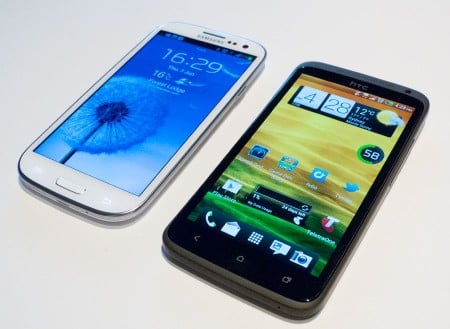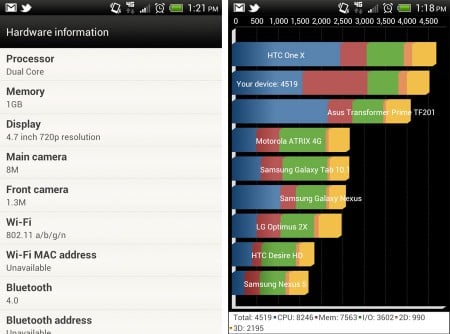Performance
The first Android 4.0 device to support Telstra’s high-speed 4G network, the HTC One XL is considered one of the biggest competitors to Apple’s iPhone and Samsung’s Galaxy S3, offering lots of performance and one of the fastest mobile web connections.
Built from the same design as the HTC One X, the handsets are pretty identical in both look and feel, with the One XL keeping the exact same polycarbonate unibody construction, albeit with a dark grey look in the One XL, replacing the white in the One X.
Just like in the One X we reviewed a month ago, the handset feels excellent in the hands, with the heavy plastic and Gorilla Glass covered screen resulting in a solid build quality that’s on par with Nokia’s unibody Lumia series. It’s also reasonably light, weighing in at 129 grams and measuring 8.9mm thin.

While it’s obviously a different phone from the One X, some things have stayed the same, with the excellent eight megapixel camera still here providing speedy shots and Full HD 1080p video capture.
The screen is still the same high quality IPS model we saw on the One X, resulting in excellent viewing angles and colour recreation no matter how you hold the handset.
HTC hasn’t even needed to change the operating system, relying on the same version of Android 4.0 “Ice Cream Sandwich” with HTC Sense running atop. Every manufacturer offers their own take of how Android should be done, and HTC’s is a great choice, offering multiple homescreens, custom widgets, and a menu system with tabbed dividers showing you every app, downloaded apps, and the most frequently used ones.

One of the more important changes in this handset is the processor inside, with the quad-core Nvidia Tegra 3 normally found in the HTC One X switched for a dual-core Qualcomm Snapdragon. Despite the jump from four cores to two, our benchmarks show the phone still flies, operating at close to – if not faster – speeds as the One X.
This change seems to have helped the battery too, achieving almost two days of battery life when used with surfing the web, taking a couple of phone calls, sending messages, and playing the odd game. Compare that to the One X, which didn’t even last a full day in our tests.









Andrew
Had One XL for a week
As a phone works great, cell coverage is just shy of nokia 6720(blue tick) which is very impressive.
Screen is fairly visible in sunlight for phone and camera.
Used only as a phone battery life is more than adequate approx 5 min talk time 5 min screen time over 9 hours used 20% of battery.
Runs smooth on the net and in its own os
htc one xl is nothing different from HTC one x both are the same no difference of screen, camera ,etc
Different processor, different connection capabilities (4G in the XL, 3G in the X), different battery life.
The silver dots? They’re a charging mechanism used by a specific charger type that HTC was rumoured to release, but never did. Not for this phone, anyway.
You can see the same sort of thing on the HTC Rhyme, a handset that – while it wasn’t 4G – used the same sort of charging technology and came with the dock. For more information, see our review on the Rhyme: https://gadgetguy.com.au/product/htc-rhyme/
You don’t. The One XL doesn’t have a removable back, last we checked.
Rather poke the pin hole with the SIM ejector tool and pull the tray out.